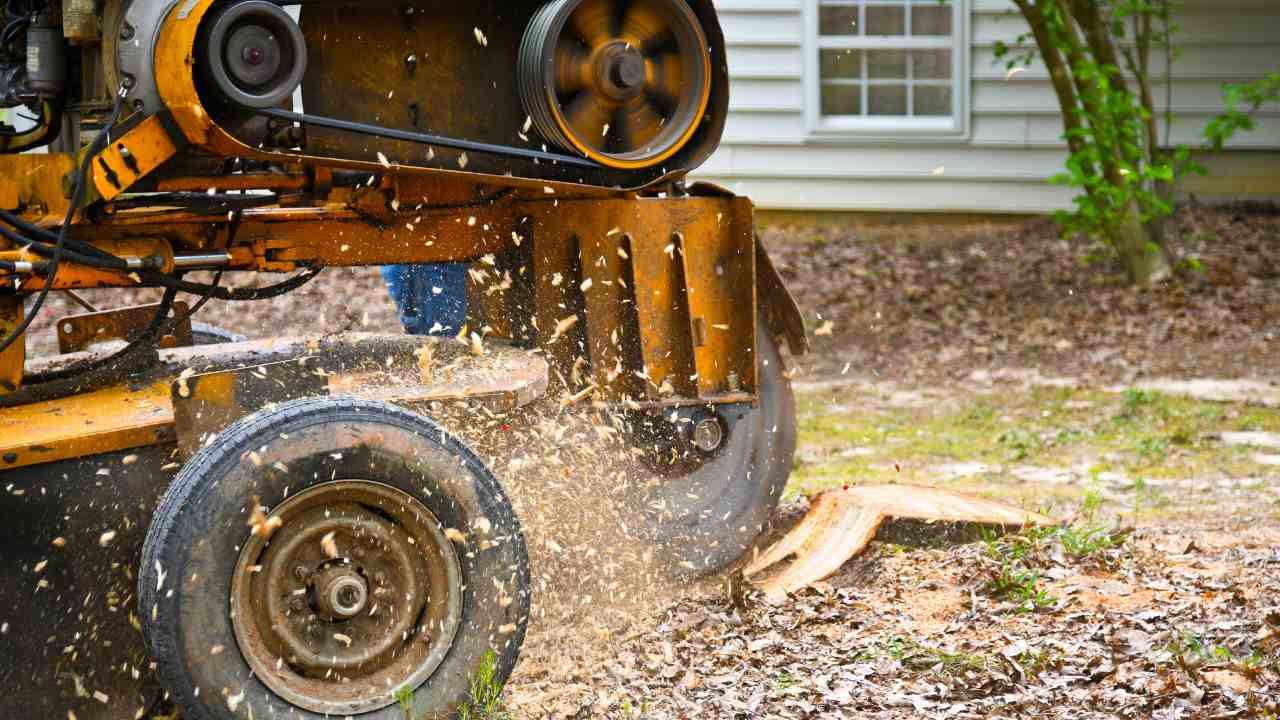Can Stump Grinding Really Benefit the New Haven Environment?

Tree removal is often a necessary step in maintaining a safe and healthy yard—but once the tree is gone, what about the stump left behind? It might seem harmless, but over time, that leftover wood can cause more trouble than most homeowners expect.
The solution? Stump grinding. And while it’s often praised for its ability to improve curb appeal and eliminate hazards, there’s another layer to its value that’s often overlooked: its environmental impact. As a professional provider of stump grinding in New Haven CT, we’ve seen firsthand how this service supports healthier ecosystems and more sustainable landscapes.
What Happens When You Leave a Stump Behind?
Let’s be real—stumps don’t just “sit there.” They decompose. And as they do, they become breeding grounds for pests, fungi, and invasive species that can wreak havoc on the rest of your property. Termites and carpenter ants, in particular, love decaying wood. If you’re not careful, that leftover stump can turn into a launchpad for a full-blown infestation.
But pests aren't the only problem. As the stump breaks down, it can foster fungal growth that spreads to surrounding healthy trees and plants. These fungi aren’t just eyesores—they can actually infect your landscape with harmful diseases that stunt plant growth or lead to the premature death of nearby vegetation.
Then there’s the issue of regrowth. Some trees—especially those with aggressive root systems—can sprout suckers even after being cut down. Those shoots sap nutrients from your soil, compete with your lawn and garden, and undo the work you’ve already done to remove the original tree.
The Eco-Friendly Case for Grinding, Not Uprooting
So, why stump grinding instead of full removal?
Here’s the thing: yanking a stump out of the ground might seem like a cleaner solution, but it can cause serious disruption underground. Full stump removal typically involves heavy machinery, extensive excavation, and damage to the surrounding soil structure. That’s not just bad for your yard—it’s bad for the micro-ecosystem living in your soil.
Stump grinding, on the other hand, leaves the root system undisturbed while reducing the visible stump to mulch. That mulch can be reused elsewhere on your property as ground cover or compost, helping to naturally retain soil moisture, prevent weed growth, and add organic matter back into your garden beds.
It’s a method that works with nature—not against it.
Healthier Soil, Happier Plants
Healthy landscapes start underground. When you opt for stump grinding, you’re protecting the integrity of your yard’s soil. And unlike chemical treatments that can leave residues behind, grinding relies on mechanical removal, which has no toxic runoff or negative impact on surrounding vegetation.
What’s left behind—a fine, wood-based mulch—eventually breaks down and enriches the soil. That means future plantings will benefit from increased nutrients and improved soil structure. Think of it as a long-term investment in the vitality of your landscape.
Plus, by removing the decaying stump, you eliminate a habitat that can harbor tree diseases, like root rot or honey fungus. This proactive step helps prevent the spread of pathogens to otherwise healthy shrubs and ornamental trees nearby.
A Cleaner, Safer Yard (Without Chemicals)
Let’s not forget the bigger picture. Stump grinding helps eliminate the need for harsh chemical treatments to prevent pest infestations. You won’t need to douse your property in pesticides or herbicides just to keep things under control. That’s not only safer for pets and kids—it’s better for the local water table and wildlife.
For homeowners who care about their carbon footprint, choosing stump grinding over chemical treatments or full stump removal is a small but impactful decision. It’s one of those eco-conscious choices that adds up—especially when you consider the cumulative benefits across your entire landscape.
Case Study: A Backyard Transformation in East Rock
We recently worked with a homeowner in New Haven’s East Rock neighborhood who had a large maple tree removed after a storm. The stump left behind was more than an eyesore—it quickly attracted carpenter ants and began to sprout shoots, putting stress on the nearby flower beds.
Instead of removing the stump entirely, we recommended stump grinding. Within a few hours, the stump was reduced to mulch, which we then repurposed around their vegetable garden. Not only did the garden beds retain moisture more efficiently, but the mulched area also became a natural weed barrier—saving the homeowner time and money throughout the summer.
The best part? Their pest problem vanished without needing chemical sprays, and their garden is still thriving.
Sustainable Landscaping Starts with Smart Decisions
Whether you’re planning a new landscaping project or just want to maintain the health and beauty of your yard, removing tree stumps the right way makes a difference. Stump grinding doesn’t just clean up your lawn—it helps build a stronger, more sustainable foundation for everything else you want to grow.
By eliminating decay, preventing disease, and enhancing soil health without disrupting the ecosystem, stump grinding proves that sometimes, the most effective solutions are the ones that quietly work behind the scenes.
Looking for a greener, safer way to clean up your yard? At Avalanche Landscaping, we believe in eco-friendly landscaping, and our services reflect this commitment by prioritizing environmental health and sustainability. Reach out today to schedule a consultation and take the first step toward a healthier, more sustainable outdoor space.

